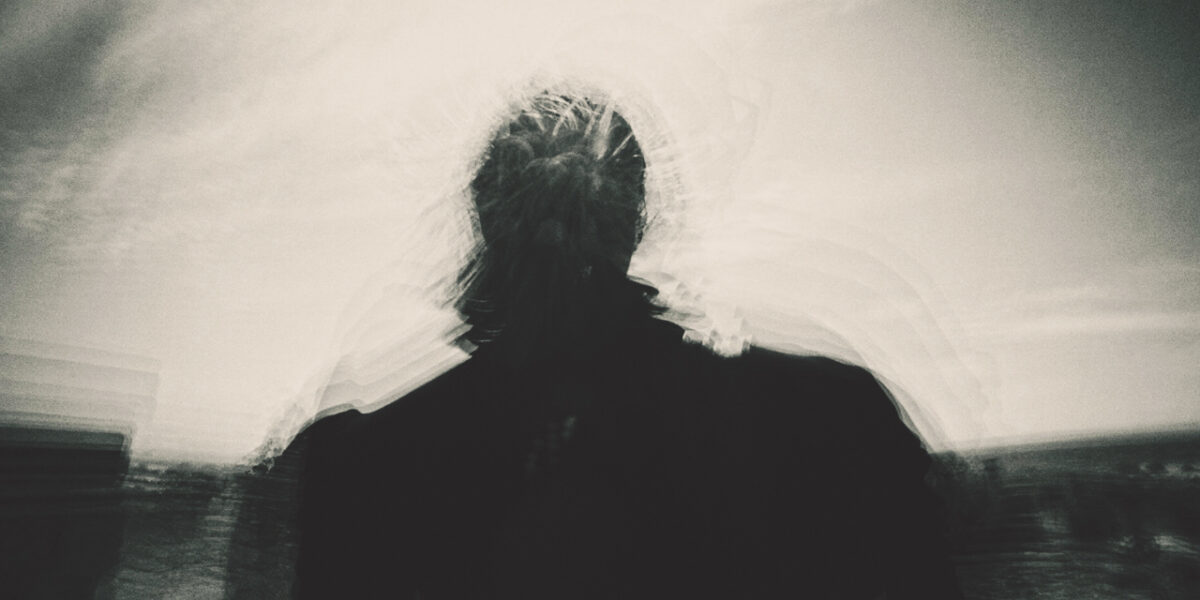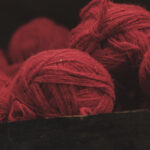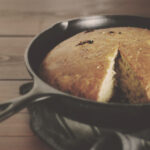On 8th November 1576, at the High Court in Edinburgh, Bessie Dunlop, an Ayrshire woman, was accused of ‘sorcery, witchcraft, and incantation, with invocation of spirits of the devil, continuing in familiarity with them at all such times as she thought expedient, dealing with charms, and jinxing the people with devilish craft of sorcery aforesaid’. But like so many people accused of witchcraft at the time of the trials, Bessie was just an ordinary woman who had never caused harm to anyone.
Bessie was what was known as a skeelywife, one who relied on old superstitions, traditional folk medicine, and charms for helping both people and animals. With a great understanding of medicinal herbs and plants, she was the local healer and midwife, and her skills were highly valued by her community.
Unfortunately in the age of hysteria in which Bessie lived, when even a birthmark could find you accused of being a witch, she quickly attracted the attention of the witchfinders of the Kirk. Accused by a neighbour, she was arrested and taken to Edinburgh where she was tortured by ‘hanging her by her thumbs, holding her soles of her feet to fire, burning of them until she wouldst confess’, and confess she did.
Bessie told the trial that while she was giving birth she had been visited by the Queen of Elfhame, the queen of the fairies, in the guise of a stout old woman. The queen had demanded a drink of water and, although in great pain, Bessie had fetched water for her. As a reward, the queen promised her a familiar and ‘commandit him to wait upon hir’.
According to Bessie she met her familiar for the first time as she was walking on the road between her house and the yard where she kept her cows. He was a man named Thom Reid, a former barony officer in Dalry who had died at the Battle of Pinkie Cleugh in 1547. He had the appearance of a respectable elderly man with a grey beard and a grey coat and breeches, white stockings gartered above the knee, and a black bonnet on his head. In his hand, he carried a white wand.
On the day that Bessie met Thom, her prize cow had just died and her husband and child were very sick. Thom predicted, correctly, that her child would die, as would two of her sheep, but her husband would make a full recovery, then, in the blink of an eye, he disappeared through a tiny hole in a dyke, far too small a hole for a mortal person to pass through.
She later met Thom in the company of eight women and four men. The men were clad in gentlemen’s clothing and the women wore expensive plaids. Thom asked Bessie if she knew any of them, to which she replied that she did not, and Thom explained that these were the good wights of the fairy court who had come to invite Bessie to return there with them. When Bessie refused, they departed with ‘a hideous ugly blast of wind‘, and left Bessie lying sick on the ground. Thom pleaded once more with Bessie to join him in the fairy court, trying to persuade her by pointing out his own well-to-do position, but Bessie was happy with her lot and continued to refuse his advances.
Bessie told the trial that Thom trained her in how to make and use ointments, tinctures, and poultices to heal people and livestock. He advised her on the locations of lost items, allowing her to aid her kinsfolk in recovering stolen property. He gave her a swatch of green lace that she could wrap around the left arm of any woman in labour, giving them pain relief and guaranteeing an easier delivery.
People came from far and wide to hear her wisdom, and even the local gentry consulted her – Lady Thirdpart and Lady Blair sought her advice regarding the whereabouts of stolen items, and Lady Johnstone asked her to heal the sickness of her daughter. Bessie, in turn, consulted Thom who advised:
“Her sickness is due to cauld blood that went about her heart, that caused her to pine away. Therefore let her take equal parts of cloves, ginger, annis-seed, and liquorice, and mix them together in ale; seethe them together; strain the mixture; put it in a vessel, then take a little quantity of it in a mutchkin can, with some white sugar cast among it; take and drink thereof each day in the morning; walk a while after, before meat, and she would soon be better.”
And she soon was. Bessie received a bag of meal and some cheese as payment.
Bessie once consulted Thom about what was likely to happen to her as a result of their acquaintance and he advised her that she would be accused of witchcraft but she would call on her neighbours and they would speak well of her, and no evil would come to her. Unfortunately, when it came to her trial, no one would speak in Bessie’s defence because they all feared for their own lives. Despite endless tortures, Bessie never changed her story. There was never any mention of pacts with the devil, midnight flights in a sieve or on a besom, milk souring, cattle charming, dancing in churches, or any of the other transgressions usually noted in a witch’s confession.
Ultimately, regardless of the fact that she had only ever done good deeds for her community and had never harmed another being, Bessie was found guilty of witchcraft and sentenced to be burned at the stake on Castle Hill in Edinburgh, though some accounts have her sentence being carried out at Corsehillmuir on the east bank of the River Garnock.
Bessie Dunlop was one of around two hundred people from Ayrshire and four thousand people in Scotland to be formally accused of witchcraft between the 16th and 18th centuries. Modern estimates indicate that over fifteen hundred people had been executed in Scotland by the time the Scottish Witchcraft Act of 1563 was repealed in 1736.






Tarkabarka says:
“Only fifteen hundred”… ugh. These stories always make me so angry… We had a fair share of them too.
I gave your blog a shout out on my blog today 🙂
@TarkabarkaHolgy from
Multicolored Diary – Epics from A to Z
MopDog – 26 Ways to Die in Medieval Hungary
April 12, 2015 — 8:57 pm
Fee says:
Thanks so much for the shout out! 🙂
The witch trials are one of those subjects that I could read endlessly about. So interesting, but very sad.
April 19, 2015 — 2:06 am
Stephanie Salazar says:
Bessie is my ancestor, and I am thankful to have found this account of her life today. I read another account that stated that even under torture she would not admit to dealings with the devil, and she held firm to her Christian faith, never renouncing it under those circumstances.
July 9, 2021 — 10:01 pm
Debra Nelson says:
I have been trying to figure out if Bessie Dunlop was connected to the Dunlops who lived in Dunlop Scotland in the Dunlop Castle. My grandmother was a Dunlap and I have the book House of Dunlop. So far I have not found Bessie in that book. Was Bessie her maiden or married name? Are your relatives by any chance found in the House of Dunlop book?
November 21, 2023 — 12:41 am
Angelina says:
Hello, how did you find out Bessie is your ancestor. I was trying to find out if she was related to me. I am trying to do the family tree as my father’s middle name is Dunlop. How did you find out Bessie is your ancestor . Regards
January 7, 2024 — 10:16 am
John Hodgart says:
‘On 8th November 1576, Bessie Dunlop, an Ayrshire woman, appeared at the High Court in Edinburgh.’
Highly unlikely as women were not permitted to appear in court at that time. Her ‘confession’ woul dhave been read out as ‘evidence’ to support the charges against her.
January 13, 2022 — 11:45 am
Fee says:
That’s interesting, John – as best I can recall, everything I’ve read about Bessie describes her as speaking her testimony in court. Do you think this is down to the history becoming muddled as time passed, or could a ‘court’ have been convened specifically to deal with her case and that allowed her to speak, since the powers that be at the time seemed so keen to make an example of her?
January 13, 2022 — 12:05 pm
John Hodgart says:
Hi Fee,
‘everything I’ve read about Bessie describes her as speaking her testimony in court.’
I think that would simply be due to people thinking her’confession’ was made in court or that she delivered it in person. They are only quoting from the list of ‘confessions’ from the records of the High Court of Justiciary in Edinburgh, (pub in Pitcairn’s Criminal Trials in Scotland, 1829),. She was possibly questioned firstly by the Archbishop of Glasgow, then by law lords in Dalkeith before the actual ‘Trial’ in Edinburgh. What she confessed to was of course a result of some very forceful ‘persuasion’ which tells us as much about her torturers’ state of mind as it does about Bessie’s.. She was possibly being made an example of, but the real cause of her undoing was probably stumbling across a case of curruption involving the sheriff officer and making enemies of some powerful local men.. They almost certainly had her apprehended and charged with witchcraft, but it is quite astonishing that she was then dragged all the way to Edinburgh to be tried by the highest court in the land. The authorities, both civil and rweligious, probably wanted to make an example of someone, in this case an innocent and harml;ess healer who had done nothing but good..
January 13, 2022 — 3:38 pm
Fee says:
Thanks for your input, John, that makes a lot of sense. I’ve been following the movement to have these poor wummin pardoned, as I’m sure you have too. Hopefully that pardon will be granted soon and it will consequently change how we talk about this horrible period of our history, and allow some healing to happen.
January 14, 2022 — 9:57 am
John Hodgart says:
Pardons? Mm, not sure how exactly you pardon people who were almost all entirely innocent of any crimes, other than petty stuff for which they paid a terrible price. I think the obsession to seek pardons, apologies and confessions for ‘our’ past sins maybe tells us more about the people seeking this than it does about the actual persecutions of the past. Memorials, statues and works of art across the country, yes, a good idea, but I’m afraid I’m very sceptical about national apologies, confessions and pardons of any kind.
January 14, 2022 — 11:09 am
Fee says:
So many innocent people have been convicted of crimes they didn’t commit. I think it’s important to have their innocence ‘officially’ declared in order to remove the stigma that surrounds them for as long as their conviction stands, to acknowledge the mistakes made, and, perhaps most importantly, to change the way these people are remembered. That’s not to say that memorials and statues and works of art aren’t important too, quite the opposite – the more of those the better!
January 14, 2022 — 11:29 am
John Hodgart says:
I think it’s important to have their innocence ‘officially’ declared in order to remove the stigma that surrounds them for as long as their conviction stands, to acknowledge the mistakes made, and, perhaps most importantly, to change the way these people are remembered..
I have never encountered any ‘stigma’ about the victims and anyone who knows anything about the witch persecutions fully understands what happened. I don’t think we need to change how we remember them. Most people know they were innocent victims. Do we seek a ‘pardon’ for the Holocaust victims? The answer is no and the very thought is quite absurd and grotesque. Even a national apology, which probably has more support, is meaningless as we are not responsible for what zealots, perverts and maniacs did in the past. Another case of virtuous and futile historical anachronism.
January 14, 2022 — 12:36 pm
Fee says:
If the victims of the Holocaust had been accused, tried, and convicted of a crime that resulted in their deaths, would a pardon be sought for them? Of course it would. I think we’ll have to agree to disagree on this one, John.
January 14, 2022 — 12:44 pm